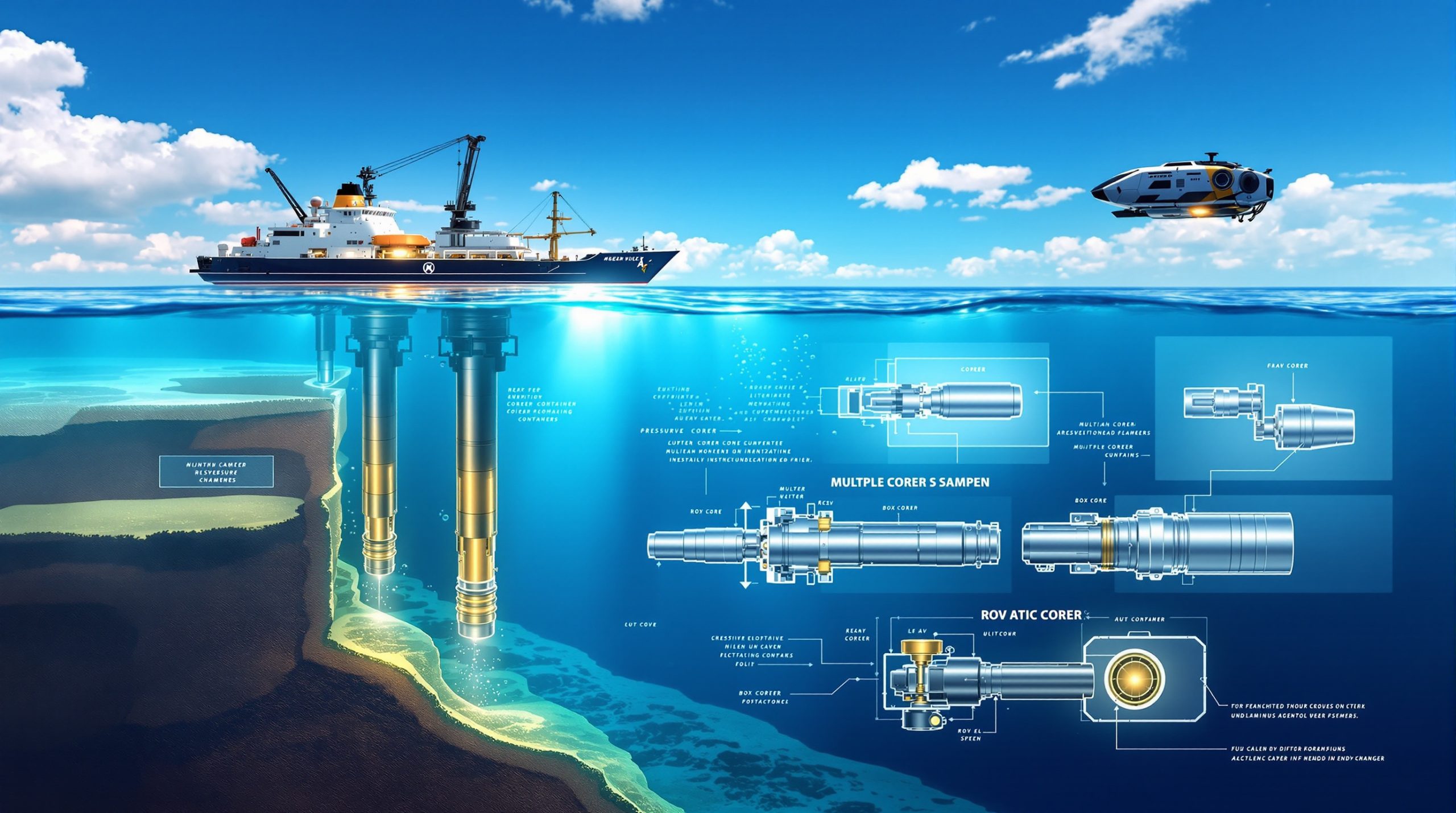Vedanta's US IPO Plans for Konkola Copper Mines: Strategic Development and Market Implications
Vedanta Resources is taking bold steps to revitalize one of Africa's most significant copper assets through a potential US public listing. The mining giant has initiated preliminary discussions for an Initial Public Offering (IPO) of its Zambian unit, Konkola Copper Mines (KCM), marking a strategic pivot after previous financing attempts fell short. This development comes at a critical time when global demand for copper and cobalt is accelerating due to the clean energy transition.
What is Vedanta's IPO Plan for Konkola Copper Mines?
Vedanta Resources is exploring a public listing in the United States for its Zambian unit Konkola Copper Mines. The company aims to raise approximately $1 billion specifically earmarked for mine development and operational expansion. According to industry sources, Vedanta has engaged financial heavyweights Barclays and Citigroup as advisors to navigate the IPO process, though discussions remain in preliminary stages with no definitive timeline established.
The current ownership structure shows Vedanta Resources holding an 80% stake in KCM, while the Zambian government maintains a 20% interest through its state-owned investment vehicle, ZCCM-IH (Zambia Consolidated Copper Mines-Investment Holdings). This ownership distribution was recently stabilized following the resolution of protracted legal disputes that had previously hampered operations and development plans.
Vedanta eyes US IPO to develop Konkola copper mines in Zambia through the creation of a US-based entity called "Global Transition Resources" specifically focused on copper, cobalt, and gold production in Africa. This demonstrates their strategic restructuring to attract international investment. This corporate vehicle could potentially serve as the listing entity, though specific details remain undisclosed.
A Vedanta spokesperson noted that the company is "considering various financing options including internal accruals, debt instruments, and equity options," highlighting the IPO as an increasingly favorable route after alternative funding attempts proved challenging.
Why is Konkola Copper Mines Significant?
KCM represents one of the most strategically valuable mineral assets in Africa's Copperbelt region. The mine contains some of the world's highest-grade copper deposits, making it particularly attractive from both efficiency and production cost perspectives. Additionally, KCM holds approximately 400,000 tonnes of cobalt reserves, a critical mineral essential for battery manufacturing.
The strategic importance of these minerals cannot be overstated in today's shifting energy landscape. Copper remains fundamental to the global electrification push, with electric vehicles requiring up to four times more copper than traditional combustion engine vehicles. Similarly, cobalt is crucial for high-performance batteries used in everything from smartphones to electric vehicles.
Under Vedanta's ambitious development plan, the company aims to increase copper production to 300,000 tonnes annually – a target they expect to achieve within a five-year development timeline. This production goal would position KCM as a significant contributor to global copper supply chains at a time when industry analysts project growing supply deficits.
Previous output at KCM suffered substantially due to legal disputes and operational challenges, with production falling well below the mine's potential capacity. The combination of high-grade deposits and substantial reserves positions KCM as a potentially transformative asset in the global commodities insights market if properly developed and capitalized.
How Has Vedanta Managed Recent Challenges at KCM?
The path to Vedanta's current position has been fraught with complex legal and operational hurdles. In a significant development last year, Vedanta founder Anil Agarwal successfully regained control of KCM's mines, smelter, and refinery operations after a prolonged legal battle with the Zambian government, which had previously placed KCM into provisional liquidation.
This settlement marked a turning point, restoring operational control to Vedanta after years of uncertainty that had severely impacted production capabilities and investment planning. According to industry analysts, the resolution demonstrated both Vedanta's commitment to the asset and the Zambian government's recognition of the need for experienced international operators to maximize the mine's potential.
Since regaining control, Vedanta has implemented a comprehensive stabilization strategy. This included securing short-term financing to address immediate operational needs, clearing outstanding local debts to rebuild supplier relationships, and significantly increasing community investments to foster local support. These steps were crucial in establishing operational stability before pursuing larger capital-raising initiatives like the proposed IPO.
The creation of the US-based entity "Global Transition Resources" represents a strategic repositioning of Vedanta's African mineral assets, potentially making them more attractive to international investors focused on critical minerals for the energy transition. This corporate restructuring demonstrates Vedanta's long-term commitment to developing these assets within a framework that appeals to global capital markets.
What Financing Options Has Vedanta Explored?
Vedanta's journey toward the potential US IPO follows several unsuccessful alternative funding attempts. A previous effort to sell a stake to UAE-based International Resources Holding fell through, despite advanced negotiations. Additionally, the company explored offloading at least 30% equity stake to various investors but couldn't secure arrangements that matched their valuation expectations and development timeline requirements.
These setbacks prompted Vedanta to broaden its financing strategy, exploring what a company spokesperson described as "internal accruals, debt instruments and equity options." Internal accruals – using existing cash flow from Vedanta's broader operations – proved insufficient given the scale of capital needed for KCM's development. Traditional debt financing presented challenges due to Vedanta's existing debt obligations and the significant scale of investment required for KCM.
The strategic rationale for pursuing a US listing is multifaceted. American capital markets offer deeper liquidity pools with specific appetite for critical mineral investments, particularly those aligned with copper clean energy strategy. A US listing could potentially command higher valuations given growing investor awareness of copper and cobalt's strategic importance in decarbonization efforts.
This approach would also allow Vedanta to raise significant capital without diluting parent company control over other operations. The timing aligns strategically with heightened investor interest in securing supply chains for energy transition minerals, potentially commanding premium valuations compared to traditional mining stocks guide.
What Are the Market Implications of Vedanta's KCM Development?
The full development of KCM could significantly impact global copper supply dynamics at a critical juncture. Industry forecasts project a widening gap between copper demand and supply, with some analysts predicting deficits exceeding 8 million tonnes by 2030 without substantial new production capacity. KCM's potential 300,000-tonne annual contribution would represent a meaningful offset to this projected shortfall.
The timing of KCM's development coincides with accelerating demand from renewable energy infrastructure and electric vehicle manufacturing. Each new wind turbine requires approximately 4-5 tonnes of copper, while grid infrastructure modernization consumes massive quantities of the metal. Electric vehicles typically contain 83kg of copper compared to 23kg in conventional vehicles, creating significant demand pressure.
From an investment perspective, a US-listed KCM entity would offer investors direct exposure to critical minerals through a transparent market structure. This could attract both institutional investors focused on energy transition themes and strategic investors seeking to secure supply chain access to these critical materials.
However, potential investors must weigh several risk factors, including operational challenges in the Zambian mining sector, regulatory uncertainties, and commodity price volatility. Zambia's history of changing mining taxation regimes and periodic political transitions creates additional layers of complexity for international investment vs speculating.
The development also carries significant implications for supply chain diversification. With copper production historically concentrated in Chile, Peru, and China, the expansion of African production capacity like KCM helps diversify global supply options, potentially reducing geopolitical risk factors for manufacturers dependent on these materials.
Additional Considerations for Vedanta's KCM Strategy
The success of Vedanta's KCM development hinges on several critical factors beyond securing capital through the proposed IPO. Infrastructure challenges in Zambia remain significant, particularly regarding reliable electricity supply – crucial for energy-intensive mining and processing operations. The country's periodic power shortages have historically impacted mining output, necessitating investments in power generation or transmission infrastructure.
Transportation logistics present another challenge, with limited rail capacity constraining the efficient movement of copper concentrate and finished cathodes to international markets. Any comprehensive development plan would need to address these bottlenecks through either direct investment or public-private partnerships.
Environmental considerations also loom large, with increasing investor scrutiny of mining operations' carbon footprint and water management practices. Vedanta will need to demonstrate robust environmental governance to attract ESG-conscious investors in US markets, particularly given historical concerns about pollution at some of its operations.
Vedanta eyes US IPO to develop Konkola copper mines in Zambia at a time when many analysts are predicting the emergence of a new commodity super cycle driven by energy transition materials. This timing could potentially enhance valuation prospects for the proposed listing.
FAQ: Vedanta's KCM Development and IPO Plans
What is the current status of Vedanta's IPO plans for KCM?
Discussions are in preliminary stages with no definitive timeline established. Barclays and Citigroup have been engaged as financial advisors to explore the viability and structure of a potential US listing.
How much does Vedanta aim to raise through the IPO?
Approximately $1 billion, with proceeds specifically earmarked for mine development and operational expansion at KCM.
What production targets has Vedanta set for KCM?
The company aims to increase copper production to around 300,000 tonnes annually, expecting to achieve this target over a five-year development timeline.
What makes KCM's mineral resources significant?
KCM contains some of the world's highest-grade copper deposits and approximately 400,000 tonnes of cobalt reserves. Both minerals are essential for the clean energy transition, with applications in renewable energy infrastructure, electric vehicles, and battery storage technologies.
What steps has Vedanta taken since regaining control of KCM?
Vedanta has secured short-term financing to stabilize operations, cleared outstanding local debts to rebuild supplier relationships, increased community investments to foster local support, and created a US-based entity called "Global Transition Resources" to potentially house its African mineral operations.
What alternative financing options has Vedanta explored before considering an IPO?
Previous attempts included trying to sell a stake to UAE-based International Resources Holding and efforts to offload at least 30% equity stake to various investors. Both approaches were unsuccessful, leading Vedanta to explore broader financing options including internal funding, debt instruments, and now a potential public listing.
Ready to Spot the Next Major Mineral Discovery?
Stay ahead of the market with Discovery Alert's proprietary Discovery IQ model, which instantly notifies investors of significant ASX mineral discoveries and turns complex data into actionable insights. Visit our discoveries page to understand why historic discoveries like De Grey Mining and WA1 Resources generated substantial returns and begin your 30-day free trial today.




